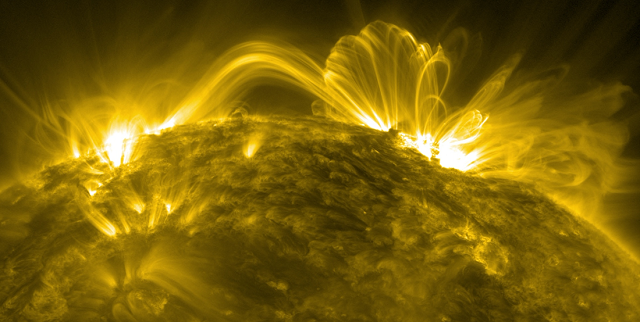Bob Siederer
March 24, 2024

Hello again Science fans and welcome to another SciSchmooze!
There are 87 events on the calendar over the next two weeks. My picks include:
- Wonderfest: BLACKBERRY and Corporate Psychology – 03/26/2024 05:00 PM
- The Psychology of Misinformation and Its Remedies – Livestream – 03/28/2024 04:00 PM
- Perlmutter, Campbell and MacCoun on Third Millennium Thinking: Creating Sense in a World of Nonsense – 03/28/2024 05:30 PM
There is a lot of news about the upcoming total solar eclipse on April 8. If you are planning to travel to see it, here’s some advice that you may find useful. If you haven’t made travel plans yet, you may be out of luck finding reasonably priced flights, accommodations or rental cars. Local astronomy legend Andrew Fraknoi also has some information for you about the eclipse.
But did you know there is also an eclipse tonight? Each solar eclipse is accompanied by an eclipse of the moon, either before or after the solar eclipse. This lunar eclipse won’t be very exciting as it is a penumbral eclipse, with the moon partially in Earth’s shadow. It will dim slightly. It will happen starting just before 10:00 PM tonight in our area, with the maximum eclipse at 12:13 AM tomorrow morning. The moon will be above the horizon during the full eclipse time here, so if it is clear (a big if) it should be visible. For all things eclipse, see timeanddate.com.
The April 8 eclipse will be a partial eclipse in the Bay Area. The next total lunar eclipse visible here will be next year on March 13 – 14, and the next total solar eclipse won’t happen in the US until 2045! You should have more than enough time to plan for that one!
As with last October’s Annular Solar Eclipse, the ExplOratorium will have a team deployed to the path of the eclipse to stream it. You can watch it here. And here’s NASA’s page covering the eclipse.
The total solar eclipse in 2017 happened near the solar minimum, the time of least solar activity in the 11 year cycle. This one will happen near the peak, and scientists are excited because this convergence of the eclipse with the near-maximum means they may be able to see some spectacular flares from the sun’s corona.
Staying in the sky for a bit, the night sky should get a “new star” that will be visible here on earth. T Coronae Borealis is a nova, a nuclear explosion from the corpse of a long-dead star. This happens about every 80 years, and it should occur again in the coming weeks.
Analysis of deep sea geological cores shows a 2.4 million year pattern in Earth’s climate, with changes caused by the interaction between the Earth and Mars, of all things. You might think Mars would be far enough away to not have much of an effect on our climate, but it does.
There’s big news in the world of physics, although some won’t like it. Sabine Hossenfelder writes about a new post-quantum theory of gravity that explains why dark matter and dark energy really don’t exist. Both of the “darks” are commonly accepted theories to explain some holes in our understanding of how the Universe came into being. This is science at its best, a new theory that explains something that the conventional wisdom hasn’t been able to do…for almost a century!
Dr. Becky Smethurst discusses the fastest growing supermassive black hole ever discovered as well as other news in the sky and space this month. Her enthusiasm is catching.
Did you know the United States just got bigger by the size of two Californias!?
If you haven’t been to Año Nuevo State Park in San Mateo or one of the other coastal locales where elephant seals congregate, you owe it to yourself to visit. We here at the SciSchmooze have occasionally sponsored trips to the park to see the harems and pups. Elephant seals were once hunted almost to extinction, but through conservation efforts have rebounded sharply. In fact, their range has expanded. Here is a success story worth reading about.
To get to Año Nuevo you will most likely pass through or near some redwood forests. These are coastal redwoods. The giant sequoias found in the Sierra Nevada are cousins. There are only around 80,000 giant sequoias remaining in California. About 160 years ago some were introduced into the United Kingdom and today there are close to half a million of them! Seems they are well suited to the weather in parts of the UK and they are thriving there. Who knew?
It is tulip time here, as well as in the Netherlands where tulips are grown for export. Viruses have been threatening this significant crop (and tourist attraction). Enter AI, and a €185,000 robots that prowls the tulip fields looking for diseased plants and culling them.
AI is the abbreviation of the year. Seems just about every product area has something new either developed with, or containing AI these days. When combined with robotics, such as the tulip monitor, the end result can be impressive. The technology behind chatbots is being used to develop AI tech that can navigate the physical world. And it is happening right here in Emeryville!
The title of the paper was “Information Management: A Proposal”. From that modest title came the World Wide Web, and all the good and bad impact it has had on life as we know it. Here’s a fascinating look at the history of www.
Lastly there’s news from Massachusetts of doctors transplanting a genetically modified pig kidney into a human patient. Best of luck to the recipient!
Have a great week in Science. I’ll be back next Sunday.
Bob Siederer
Upcoming Events:
Click to see the next two weeks of events in your browser.
